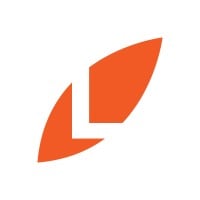
Seattle University Company Cyber Security Posture
seattleu.eduGreat teaching and experiential learning. An inclusive campus that fosters community and belonging. Located in a global hub for tech and innovation. Empowering leaders through a values-based education. Seattle University doesn’t just prepare you for a constantly changing world—we help you shape it for the better. Founded in 1891, Seattle University is a Jesuit, Catholic university located on 50 acres in Seattle’s Capitol Hill neighborhood. Nearly 7,200 students are enrolled in undergraduate and graduate programs within six schools and colleges. The Redhawk alumni community is 90,000+ strong. Nearly 64% of our alumni remain in Washington—including 61% in the Puget Sound region—contributing to the state economy and talent pool after graduation. Top employers of Seattle University alumni include Amazon, Boeing, Costco, Microsoft and Seattle Children’s.
Seattle University Company Details
seattle-university
3286 employees
81625.0
611
Higher Education
seattleu.edu
Scan still pending
SEA_1991134
In-progress
Between 800 and 900
This score is AI-generated and less favored by cyber insurers, who prefer the TPRM score.
 Seattle University Global Score
Seattle University Global Score.png)

Seattle University Company Scoring based on AI Models
| Model Name | Date | Description | Current Score Difference | Score |
|---|---|---|---|---|
| AVERAGE-Industry | 03-12-2025 | This score represents the average cybersecurity rating of companies already scanned within the same industry. It provides a benchmark to compare an individual company's security posture against its industry peers. | N/A | Between 800 and 900 |
Seattle University Company Cyber Security News & History
| Entity | Type | Severity | Impact | Seen | Url ID | Details | View |
|---|---|---|---|---|---|---|---|
| Seattle University | Data Leak | 60 | 3 | 04/2014 | SEA17522123 | Link | |
Rankiteo Explanation : Attack with significant impact with internal employee data leaksDescription: The permissions for some folders in the Seattle University's Microsoft Exchange folder system were set incorrectly, that allowed anyone with a university email address to gain access to the files in those folders. The personal information for 628 current and former students was stored in those folders. Students were offered free credit monitoring services. | |||||||
| Seattle University | Data Leak | 60 | 3 | 03/2019 | SEA15020323 | Link | |
Rankiteo Explanation : Attack with significant impact with internal employee data leaksDescription: Seattle University warned that the names and Social Security numbers of more than 2,000 people could be exposed after a university-issued laptop was lost last month. Files containing information for 2,102 current and former faculty, staff and their dependents were accessible from the unencrypted laptop. The university said that while there’s no indication the information was accessed, the laptop has access to information about employees and their dependents enrolled in the university’s benefit plan. The university sent letters to those who be affected, offering a one-year membership for an identity-theft and credit-monitoring service. | |||||||
Seattle University Company Subsidiaries

Great teaching and experiential learning. An inclusive campus that fosters community and belonging. Located in a global hub for tech and innovation. Empowering leaders through a values-based education. Seattle University doesn’t just prepare you for a constantly changing world—we help you shape it for the better. Founded in 1891, Seattle University is a Jesuit, Catholic university located on 50 acres in Seattle’s Capitol Hill neighborhood. Nearly 7,200 students are enrolled in undergraduate and graduate programs within six schools and colleges. The Redhawk alumni community is 90,000+ strong. Nearly 64% of our alumni remain in Washington—including 61% in the Puget Sound region—contributing to the state economy and talent pool after graduation. Top employers of Seattle University alumni include Amazon, Boeing, Costco, Microsoft and Seattle Children’s.
Access Data Using Our API

Get company history
.png)
Seattle University Cyber Security News
Erik Moore Appointed New Online MS in Cybersecurity Leadership Program Director
Erik Moore joined Albers in May as Program Director for its new online offering, the MS in Cybersecurity Leadership, which launches this fall.
Cyber Liberal Arts | articles | Blog | Technology Ethics Initiative
There is a set of skills for maintaining our autonomy of thought, action, and creativity. It is the new emerging discipline of the cyber liberal arts.
Cybersecurity startup SpecterOps, which has an office in Seattle, raises $75M
SpecterOps, an Alexandria, Va.-based cybersecurity startup that helps companies fend off identity-based threats, raised $75 million in a ...
Expert issues warning after PowerSchool data breach
Seattle Public Schools announced Thursday that while they use PowerSchool's services, student data within their district was not compromised.
Artificial Intelligence, Online, MS | All Programs | Academics
Seattle University's Master's in Artificial Intelligence program empowers students to address rapidly growing demand for AI expertise.
With $50M infusion, UW to launch security center to fight research theft
UW was targeted by China's Ministry of State Security hackers, who attempted to gain access to its applied physics program.
Here's how the global outage is impacting western Washington
A global technology outage caused by a faulty software update grounded flights, knocked media outlets offline and disrupted hospitals, small businesses and ...
Beyond the CrowdStrike outage: The larger forces at play, and a long-term view on cybersecurity
We explore the aftermath of the CrowdStrike outage, the larger forces at play, the future of cybersecurity, and the long-term implications for the world.
Highline cancels second day of class amid rise in tech troubles for districts nationally
Highline Public Schools (HPS) said classes will be canceled again on Tuesday as it works to investigate "unauthorized activity" on its technology systems.

Seattle University Similar Companies

Nanyang Technological University Singapore
A research-intensive public university, Nanyang Technological University, Singapore (NTU Singapore) has 33,000 undergraduate and postgraduate students in the Engineering, Business, Science, Medicine, Humanities, Arts, & Social Sciences, and Graduate colleges. NTU is also home to world-renowned au

Laureate Education, Inc.
For more than 20 years, we have remained committed to making a positive impact in the communities we serve, by providing accessible, high-quality undergraduate, graduate, and specialized degree programs. We know that when our students succeed, countries prosper, and societies benefit. We take very

Arizona State University
ASU has developed a new model for the American research university, creating an institution committed to excellence, access and impact — the New American University. Nationally and internationally acclaimed, ASU ranks among the very best in nearly every critical measurement of student success, out

Temple University
As the largest university in one of the nation’s most iconic cities, Temple educates diverse future leaders from across Philadelphia, the country and the world who share a common drive to learn, prepare for their careers and make a real impact. Founded as a night school by Russell Conwell in 1884, T

Indiana University Bloomington
Indiana University Bloomington is the flagship residential, research-intensive campus of Indiana University. Its academic excellence is grounded in the humanities, arts and sciences, and a range of highly ranked professional programs. Founded in 1820, the campus serves more than 42,000 undergradua

The University of Alabama
The University of Alabama is a student-centered research university and an academic community committed to enhancing the quality of life for all through breakthrough research. Founded in 1831 as Alabama's first public college, The University of Alabama is dedicated to excellence in teaching, resea

Frequently Asked Questions (FAQ) on Cybersecurity Incidents
Seattle University CyberSecurity History Information
Total Incidents: According to Rankiteo, Seattle University has faced 2 incidents in the past.
Incident Types: The types of cybersecurity incidents that have occurred include ['Data Leak'].
Total Financial Loss: The total financial loss from these incidents is estimated to be {total_financial_loss}.
Cybersecurity Posture: The company's overall cybersecurity posture is described as Great teaching and experiential learning. An inclusive campus that fosters community and belonging. Located in a global hub for tech and innovation. Empowering leaders through a values-based education. Seattle University doesn’t just prepare you for a constantly changing world—we help you shape it for the better. Founded in 1891, Seattle University is a Jesuit, Catholic university located on 50 acres in Seattle’s Capitol Hill neighborhood. Nearly 7,200 students are enrolled in undergraduate and graduate programs within six schools and colleges. The Redhawk alumni community is 90,000+ strong. Nearly 64% of our alumni remain in Washington—including 61% in the Puget Sound region—contributing to the state economy and talent pool after graduation. Top employers of Seattle University alumni include Amazon, Boeing, Costco, Microsoft and Seattle Children’s..
Detection and Response: The company detects and responds to cybersecurity incidents through {description_of_detection_and_response_process}.
Incident Details
Incident 1: Ransomware Attack
Title: {Incident_Title}
Description: {Brief_description_of_the_incident}
Date Detected: {Detection_Date}
Date Publicly Disclosed: {Disclosure_Date}
Date Resolved: {Resolution_Date}
Type: {Type_of_Attack}
Attack Vector: {Attack_Vector}
Vulnerability Exploited: {Vulnerability}
Threat Actor: {Threat_Actor}
Motivation: {Motivation}
Incident 2: Data Breach
Title: {Incident_Title}
Description: {Brief_description_of_the_incident}
Date Detected: {Detection_Date}
Date Publicly Disclosed: {Disclosure_Date}
Date Resolved: {Resolution_Date}
Type: {Type_of_Attack}
Attack Vector: {Attack_Vector}
Vulnerability Exploited: {Vulnerability}
Threat Actor: {Threat_Actor}
Motivation: {Motivation}
Common Attack Types: The most common types of attacks the company has faced are ['Data Leak'].
Identification of Attack Vectors: The company identifies the attack vectors used in incidents through {description_of_identification_process}.
Impact of the Incidents
Incident 1: Ransomware Attack
Financial Loss: {Financial_Loss}
Data Compromised: {Data_Compromised}
Systems Affected: {Systems_Affected}
Downtime: {Downtime}
Operational Impact: {Operational_Impact}
Conversion Rate Impact: {Conversion_Rate_Impact}
Revenue Loss: {Revenue_Loss}
Customer Complaints: {Customer_Complaints}
Brand Reputation Impact: {Brand_Reputation_Impact}
Legal Liabilities: {Legal_Liabilities}
Identity Theft Risk: {Identity_Theft_Risk}
Payment Information Risk: {Payment_Information_Risk}
Incident 2: Data Breach
Financial Loss: {Financial_Loss}
Data Compromised: {Data_Compromised}
Systems Affected: {Systems_Affected}
Downtime: {Downtime}
Operational Impact: {Operational_Impact}
Conversion Rate Impact: {Conversion_Rate_Impact}
Revenue Loss: {Revenue_Loss}
Customer Complaints: {Customer_Complaints}
Brand Reputation Impact: {Brand_Reputation_Impact}
Legal Liabilities: {Legal_Liabilities}
Identity Theft Risk: {Identity_Theft_Risk}
Payment Information Risk: {Payment_Information_Risk}
Average Financial Loss: The average financial loss per incident is {average_financial_loss}.
Commonly Compromised Data Types: The types of data most commonly compromised in incidents are {list_of_commonly_compromised_data_types}.
Incident 1: Ransomware Attack
Entity Name: {Entity_Name}
Entity Type: {Entity_Type}
Industry: {Industry}
Location: {Location}
Size: {Size}
Customers Affected: {Customers_Affected}
Incident 2: Data Breach
Entity Name: {Entity_Name}
Entity Type: {Entity_Type}
Industry: {Industry}
Location: {Location}
Size: {Size}
Customers Affected: {Customers_Affected}
Response to the Incidents
Incident 1: Ransomware Attack
Incident Response Plan Activated: {Yes/No}
Third Party Assistance: {Yes/No}
Law Enforcement Notified: {Yes/No}
Containment Measures: {Containment_Measures}
Remediation Measures: {Remediation_Measures}
Recovery Measures: {Recovery_Measures}
Communication Strategy: {Communication_Strategy}
Adaptive Behavioral WAF: {Adaptive_Behavioral_WAF}
On-Demand Scrubbing Services: {On_Demand_Scrubbing_Services}
Network Segmentation: {Network_Segmentation}
Enhanced Monitoring: {Enhanced_Monitoring}
Incident 2: Data Breach
Incident Response Plan Activated: {Yes/No}
Third Party Assistance: {Yes/No}
Law Enforcement Notified: {Yes/No}
Containment Measures: {Containment_Measures}
Remediation Measures: {Remediation_Measures}
Recovery Measures: {Recovery_Measures}
Communication Strategy: {Communication_Strategy}
Adaptive Behavioral WAF: {Adaptive_Behavioral_WAF}
On-Demand Scrubbing Services: {On_Demand_Scrubbing_Services}
Network Segmentation: {Network_Segmentation}
Enhanced Monitoring: {Enhanced_Monitoring}
Incident Response Plan: The company's incident response plan is described as {description_of_incident_response_plan}.
Third-Party Assistance: The company involves third-party assistance in incident response through {description_of_third_party_involvement}.
Data Breach Information
Incident 2: Data Breach
Type of Data Compromised: {Type_of_Data}
Number of Records Exposed: {Number_of_Records}
Sensitivity of Data: {Sensitivity_of_Data}
Data Exfiltration: {Yes/No}
Data Encryption: {Yes/No}
File Types Exposed: {File_Types}
Personally Identifiable Information: {Yes/No}
Prevention of Data Exfiltration: The company takes the following measures to prevent data exfiltration: {description_of_prevention_measures}.
Handling of PII Incidents: The company handles incidents involving personally identifiable information (PII) through {description_of_handling_process}.
Ransomware Information
Incident 1: Ransomware Attack
Ransom Demanded: {Ransom_Amount}
Ransom Paid: {Ransom_Paid}
Ransomware Strain: {Ransomware_Strain}
Data Encryption: {Yes/No}
Data Exfiltration: {Yes/No}
Ransom Payment Policy: The company's policy on paying ransoms in ransomware incidents is described as {description_of_ransom_payment_policy}.
Data Recovery from Ransomware: The company recovers data encrypted by ransomware through {description_of_data_recovery_process}.
Regulatory Compliance
Incident 1: Ransomware Attack
Regulations Violated: {Regulations_Violated}
Fines Imposed: {Fines_Imposed}
Legal Actions: {Legal_Actions}
Regulatory Notifications: {Regulatory_Notifications}
Incident 2: Data Breach
Regulations Violated: {Regulations_Violated}
Fines Imposed: {Fines_Imposed}
Legal Actions: {Legal_Actions}
Regulatory Notifications: {Regulatory_Notifications}
Regulatory Frameworks: The company complies with the following regulatory frameworks regarding cybersecurity: {list_of_regulatory_frameworks}.
Ensuring Regulatory Compliance: The company ensures compliance with regulatory requirements through {description_of_compliance_measures}.
Lessons Learned and Recommendations
Incident 1: Ransomware Attack
Lessons Learned: {Lessons_Learned}
Incident 2: Data Breach
Lessons Learned: {Lessons_Learned}
Incident 1: Ransomware Attack
Recommendations: {Recommendations}
Incident 2: Data Breach
Recommendations: {Recommendations}
Key Lessons Learned: The key lessons learned from past incidents are {list_of_key_lessons_learned}.
Implemented Recommendations: The company has implemented the following recommendations to improve cybersecurity: {list_of_implemented_recommendations}.
References
Additional Resources: Stakeholders can find additional resources on cybersecurity best practices at {list_of_additional_resources}.
Investigation Status
Incident 1: Ransomware Attack
Investigation Status: {Investigation_Status}
Incident 2: Data Breach
Investigation Status: {Investigation_Status}
Communication of Investigation Status: The company communicates the status of incident investigations to stakeholders through {description_of_communication_process}.
Stakeholder and Customer Advisories
Incident 1: Ransomware Attack
Stakeholder Advisories: {Stakeholder_Advisories}
Customer Advisories: {Customer_Advisories}
Incident 2: Data Breach
Stakeholder Advisories: {Stakeholder_Advisories}
Customer Advisories: {Customer_Advisories}
Advisories Provided: The company provides the following advisories to stakeholders and customers following an incident: {description_of_advisories_provided}.
Initial Access Broker
Incident 1: Ransomware Attack
Entry Point: {Entry_Point}
Reconnaissance Period: {Reconnaissance_Period}
Backdoors Established: {Backdoors_Established}
High Value Targets: {High_Value_Targets}
Data Sold on Dark Web: {Yes/No}
Incident 2: Data Breach
Entry Point: {Entry_Point}
Reconnaissance Period: {Reconnaissance_Period}
Backdoors Established: {Backdoors_Established}
High Value Targets: {High_Value_Targets}
Data Sold on Dark Web: {Yes/No}
Monitoring and Mitigation of Initial Access Brokers: The company monitors and mitigates the activities of initial access brokers through {description_of_monitoring_and_mitigation_measures}.
Post-Incident Analysis
Incident 1: Ransomware Attack
Root Causes: {Root_Causes}
Corrective Actions: {Corrective_Actions}
Incident 2: Data Breach
Root Causes: {Root_Causes}
Corrective Actions: {Corrective_Actions}
Post-Incident Analysis Process: The company's process for conducting post-incident analysis is described as {description_of_post_incident_analysis_process}.
Corrective Actions Taken: The company has taken the following corrective actions based on post-incident analysis: {list_of_corrective_actions_taken}.
Additional Questions
General Information
Ransom Payment History: The company has {paid/not_paid} ransoms in the past.
Last Ransom Demanded: The amount of the last ransom demanded was {last_ransom_amount}.
Last Attacking Group: The attacking group in the last incident was {last_attacking_group}.
Incident Details
Most Recent Incident Detected: The most recent incident detected was on {most_recent_incident_detected_date}.
Most Recent Incident Publicly Disclosed: The most recent incident publicly disclosed was on {most_recent_incident_publicly_disclosed_date}.
Most Recent Incident Resolved: The most recent incident resolved was on {most_recent_incident_resolved_date}.
Impact of the Incidents
Highest Financial Loss: The highest financial loss from an incident was {highest_financial_loss}.
Most Significant Data Compromised: The most significant data compromised in an incident was {most_significant_data_compromised}.
Most Significant System Affected: The most significant system affected in an incident was {most_significant_system_affected}.
Response to the Incidents
Third-Party Assistance in Most Recent Incident: The third-party assistance involved in the most recent incident was {third_party_assistance_in_most_recent_incident}.
Containment Measures in Most Recent Incident: The containment measures taken in the most recent incident were {containment_measures_in_most_recent_incident}.
Data Breach Information
Most Sensitive Data Compromised: The most sensitive data compromised in a breach was {most_sensitive_data_compromised}.
Number of Records Exposed: The number of records exposed in the most significant breach was {number_of_records_exposed}.
Ransomware Information
Highest Ransom Demanded: The highest ransom demanded in a ransomware incident was {highest_ransom_demanded}.
Highest Ransom Paid: The highest ransom paid in a ransomware incident was {highest_ransom_paid}.
Regulatory Compliance
Highest Fine Imposed: The highest fine imposed for a regulatory violation was {highest_fine_imposed}.
Most Significant Legal Action: The most significant legal action taken for a regulatory violation was {most_significant_legal_action}.
Lessons Learned and Recommendations
Most Significant Lesson Learned: The most significant lesson learned from past incidents was {most_significant_lesson_learned}.
Most Significant Recommendation Implemented: The most significant recommendation implemented to improve cybersecurity was {most_significant_recommendation_implemented}.
References
Most Recent Source: The most recent source of information about an incident is {most_recent_source}.
Most Recent URL for Additional Resources: The most recent URL for additional resources on cybersecurity best practices is {most_recent_url}.
Investigation Status
Current Status of Most Recent Investigation: The current status of the most recent investigation is {current_status_of_most_recent_investigation}.
Stakeholder and Customer Advisories
Most Recent Stakeholder Advisory: The most recent stakeholder advisory issued was {most_recent_stakeholder_advisory}.
Most Recent Customer Advisory: The most recent customer advisory issued was {most_recent_customer_advisory}.
Initial Access Broker
Most Recent Entry Point: The most recent entry point used by an initial access broker was {most_recent_entry_point}.
Most Recent Reconnaissance Period: The most recent reconnaissance period for an incident was {most_recent_reconnaissance_period}.
Post-Incident Analysis
Most Significant Root Cause: The most significant root cause identified in post-incident analysis was {most_significant_root_cause}.
Most Significant Corrective Action: The most significant corrective action taken based on post-incident analysis was {most_significant_corrective_action}.
What Do We Measure?
















Every week, Rankiteo analyzes billions of signals to give organizations a sharper, faster view of emerging risks. With deeper, more actionable intelligence at their fingertips, security teams can outpace threat actors, respond instantly to Zero-Day attacks, and dramatically shrink their risk exposure window.
These are some of the factors we use to calculate the overall score:
Identify exposed access points, detect misconfigured SSL certificates, and uncover vulnerabilities across the network infrastructure.
Gain visibility into the software components used within an organization to detect vulnerabilities, manage risk, and ensure supply chain security.
Monitor and manage all IT assets and their configurations to ensure accurate, real-time visibility across the company's technology environment.
Leverage real-time insights on active threats, malware campaigns, and emerging vulnerabilities to proactively defend against evolving cyberattacks.




